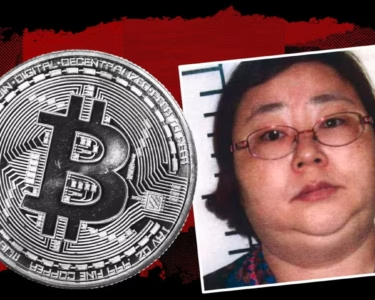On Easter Sunday, a day traditionally marked by reflection, renewal, and unity, the White House issued a message from President Donald J. Trump that has reignited fierce debate across the political spectrum. The statement from the 45th and 47th President was posted at 15:45 UTC on X. He is now in his second non-consecutive term. The message began with a festive “Happy Easter to all.” It quickly pivoted to a scathing attack on the “Radical Left Lunatics.”
Trump accused them of fighting and scheming. He claimed they are bringing murderers and drug lords into the country. He also mentioned dangerous prisoners, the mentally insane, and well-known MS-13 gang members. He also slammed judges, prosecutors, and former President Joe Biden.
The message closed with a seemingly paradoxical “I wish you, with great love, sincerity, and affection, a very Happy Easter.” It has drawn sharp criticism and some support. This message exposes the deep divisions in America on a day meant for spiritual reconciliation.
The timing of the message is particularly striking. A week before, on April 13, the White House released a Holy Week statement. This message struck a more traditional tone. Signed by Trump and First Lady Melania, it spoke of Christ’s “excruciating pain, torture, and execution on the cross.” It highlighted the redemption offered through His sacrifice.
The message also pledged to defend Christian values in schools, workplaces, and government. That message aligned with the solemnity of the season, emphasizing “love, humility, and obedience” in the face of life’s challenges. Yet, the Easter Sunday post took a markedly different turn. It blended holiday greetings with the combative rhetoric that has defined Trump’s political career.
Reactions on X were swift and polarized. Critics like @RichardAngwin called the message a “disgrace.” They argued that Trump was “using a sacred day to spew division and hate.” @TobyCarlson echoed this sentiment, writing, “When a man uses Easter—the remembrance of resurrection, forgiveness, and divine love—to hurl accusations, he deepens division. He also dehumanizes half the country.
It reveals not strength, but spiritual bankruptcy.” Carlson’s post included a serene image of a sunset over the ocean. It underscored the contrast between the holiday’s intended message and Trump’s words. @TravisAkers shared a Bible verse from 1 John 4:20. The verse reads, “Whoever claims to love God yet hates a brother or sister is a liar.” This was a pointed rebuke. It suggested that Trump’s rhetoric undermines the Christian principles he claims to uphold.
Others, however, saw the message differently. @1TrillionUSDoge offered a simple “Happy Easter to the coolest White House we ever had.” This reflects a segment of Trump’s base that appreciates his unfiltered style. They appreciate it even on a day like Easter. An OutKick article published earlier that day praised Trump’s closing line as a “masterpiece.”
The article noted that his ability to pair harsh criticism with a gesture of goodwill keeps his supporters engaged. This duality consists of attack followed by a veneer of magnanimity. It has long been a hallmark of Trump’s communication strategy. It resonates with those who feel alienated by the political establishment.
The phrase “Radical Left Lunatics” itself is worth unpacking. According to a recent Wikipedia entry on far-left politics, the radical left occupies a space between social democracy and the extreme left, often advocating for fundamental changes to neoliberal capitalism while rejecting revolutionary action in favor of reform within existing systems.
Trump’s use of the term, however, casts a wider net, lumping together a broad swath of his political opponents with inflammatory descriptors like “corrupt” and “mentally insane.” This language mirrors his broader narrative of a nation under siege by internal enemies, a theme that helped propel him back to the White House in 2024, making him only the second U.S. president to serve non-consecutive terms after Grover Cleveland.
The X thread reveals a deeper tension: can a leader use a sacred holiday to advance a political agenda without undermining its spiritual significance? @BuiltUSTough called Trump’s message “disgusting,” adding, “That is the rambling of a psychopath who needs Jesus!” alongside an image of a “Jesus Christ: Savior of Mankind” action figure, a satirical jab at the commercialization of faith.
@JOP_1985 took a more biting tone, writing, “‘Happy Easter to all—including the people I just called lunatics, criminals, and traitors.’ When you weaponize a holiday greeting like it’s a courtroom tantrum with pastel sprinkles, you’re not leading a nation. You’re just live-tweeting your persecution complex in cursive.” The hashtag #CrossNotCults trended briefly, capturing the sentiment of those who feel Trump’s approach borders on cult-like leadership rather than genuine Christian values.
Yet, for all the criticism, Trump’s message resonates with a significant portion of the electorate. His return to power at 78, despite being the first convicted felon to become president, speaks to his enduring appeal among those who see him as a bulwark against the “radical left” and other perceived threats. The OutKick piece noted that Trump’s Easter message was first shared on Truth Social at 8:46 AM ET.
It followed a more traditional “HE IS RISEN” post. This suggests a calculated escalation to dominate the day’s news cycle. And dominate it did—by mid-afternoon, the White House post had sparked thousands of replies, retweets, and quote tweets, amplifying the debate.
As I scrolled through the X thread, one reply stood out: @PhotographicFloridian’s simple “He Has Risen,” paired with a stunning ocean sunrise. It was a quiet reminder of what Easter could be—a moment of awe and gratitude, unmarred by political vitriol. But in 2025, with a nation still grappling with the aftershocks of a contentious election, such moments feel fleeting. Trump’s Easter message acts as a rallying cry or perhaps a betrayal of the day’s spirit. It underscores a broader truth. Even on a day meant to celebrate resurrection, America remains a house divided.







